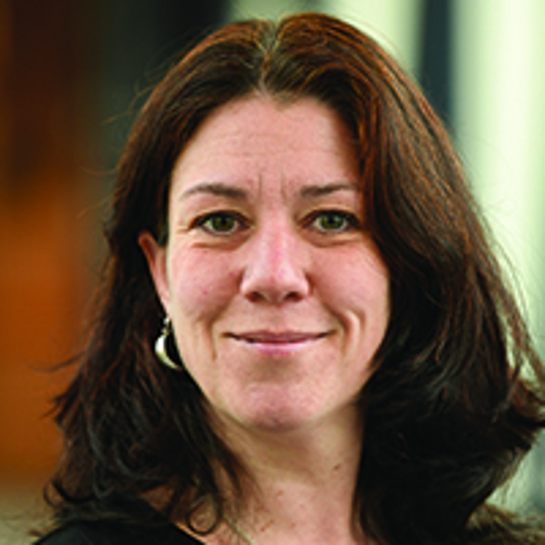High School Mathematical Contest in Modeling Explores Dandelions and Electric Buses
The Consortium for Mathematics and Its Applications (COMAP)—which has been providing educators with mathematical modeling resources for more than four decades—held its annual High School Mathematical Contest in Modeling (HiMCM) from November 1-14, 2023. The final judging session took place in January and acknowledged nine outstanding winning teams from around the world for their impressive solution papers. All current middle and high school students are eligible to register for this two-week competition, though teams where all members are 14.5 years old or younger may instead choose to partake in the Middle Mathematical Contest in Modeling (MidMCM). Participating HiMCM teams—comprised of up to four students from the same school—have a 14-day window to select and download one of two open-ended, real-world problems; collaborate and employ mathematical modeling techniques to develop a solution; and electronically submit their final papers to COMAP. MidMCM follows the same protocol but only consists of a single problem.
A total of 967 teams from 417 schools and 18 countries/regions competed in the 2023 HiMCM. SIAM members Kathleen Kavanagh and Benjamin Galluzzo (both of Clarkson University) each wrote one of the two prompts, which were respectively titled “Dandelions: Friend? Foe? Both? Neither?” and “Charging Ahead with E-buses.”
Kavanagh authored Problem A, which focused on invasive species and asked students to predict the spread of dandelions over the course of one, two, three, six, and 12 months given the initial presence of a single “puffball” next to an open field (see Figure 1). In addition to spatial considerations, most of the teams accounted for seed release, seed travel time, germination time, and dandelion growth phases. The problem also challenged students to analyze the dandelion’s potential success under different climate conditions, such as varying levels of wind, temperature, and humidity. Finally, participants created ranking systems that assigned an impact factor to an invasive species, then tested their models on dandelions and two other plants of their choice. The breadth and depth of the solution papers were outstanding; they utilized techniques that ranged from simple linear models to finite element simulations and susceptible-infectious-recovered systems of equations.

In Problem B, Galluzzo prompted teams to address the global shift towards electric buses (e-buses) as a sustainable urban transportation solution in light of growing concerns about air pollution and climate change. The problem asked students to devise models that assessed the ecological and financial impacts of a shift to e-buses while accounting for factors like initial costs, operational expenses, and governmental incentives. After selecting a metropolitan area of their choice, teams used their models to generate a 10-year roadmap for the hypothetical transition to a fully electric bus fleet, paying strict attention to complications like charging infrastructure and range limitations. They then crafted concise policy recommendation letters that articulated their strategies and recommendations to transportation officials, emphasizing the necessity of a holistic approach to sustainable transit.
Readers might also be familiar with COMAP’s sister competitions for undergraduate students: the Mathematical Contest in Modeling (MCM) and Interdisciplinary Contest in Modeling (ICM). MCM/ICM take place annually in February and provide students with an opportunity to work on a team and improve their modeling, problem-solving, and writing skills. In 2024, more than 30,000 teams from across the world participated in these international contests.
SIAM members can support and promote mathematical modeling competitions in a variety of ways. COMAP’s slate of competitions and the MathWorks Math Modeling Challenge (M3 Challenge)—a program of SIAM with MathWorks as its title sponsor—are constantly seeking challenge questions for future competitions. If you have an idea for a real-world problem that is well suited for mathematical modeling and you would like to submit it for consideration, HiMCM coordinators and the M3 Challenge Problem Development Committee will work with problem authors to tailor their questions for the appropriate audience and locate any relevant data. Both organizations also routinely look for judges to review student submissions and select the winners.
Additionally, U.S. teams that score well in either HiMCM or M3 Challenge may be invited to potentially represent the U.S. in the International Mathematical Modeling Challenge (IM2C): a competition that allows each participating country/region to nominate up to two representative teams that then tackle a difficult math modeling problem over five consecutive days. For more information about HiMCM and M3 Challenge, please reach out to himcm@comap.org and m3challenge@siam.org.
M3 Challenge is an annual mathematical modeling competition for U.S. high school juniors and seniors and sixth form students in England and Wales. Participating teams of three to five students have 14 consecutive hours during Challenge Weekend to tackle a complex, real-world problem and produce a report that explains and justifies their solutions. Registration is completely free.
The 2024 M3 Challenge Final Event will take place on April 29th in New York City. The finalist teams and Technical Computing awardees—having submitted their papers in early March—will present their work to a live panel of judges and compete for more than $100,000 in scholarship funds. Stay tuned for an article about the winning team’s solution in the June issue of SIAM News!
About the Authors
Kathleen Kavanagh
Professor, Clarkson University
Kathleen Kavanagh is a professor of mathematics at Clarkson University.

Benjamin Galluzzo
Associate professor, Clarkson University
Benjamin Galluzzo is an associate professor of mathematics at Clarkson University.
Stay Up-to-Date with Email Alerts
Sign up for our monthly newsletter and emails about other topics of your choosing.



